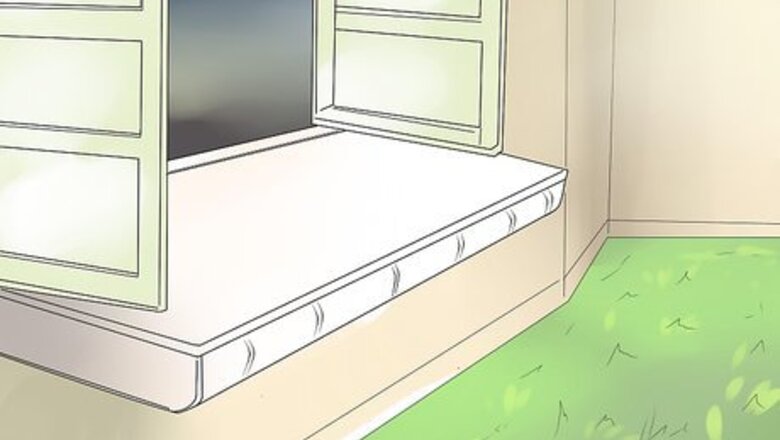
views
X
Research source
they are most commonly grown indoors. This species is one of the easiest flowering houseplants to grow successfully. Their long, trailing stems can be trained to grow up a small trellis or the plant can be grown in a hanging container with the long stems dangling down.[2]
X
Trustworthy Source
Missouri Botanical Garden
Oldest botanical garden in the U.S. and center for botanical research and science education
Go to source
When Hoya plants get big enough, they will produce round umbels or clusters of star-shaped flowers.
Giving Your Hoya Light and Water
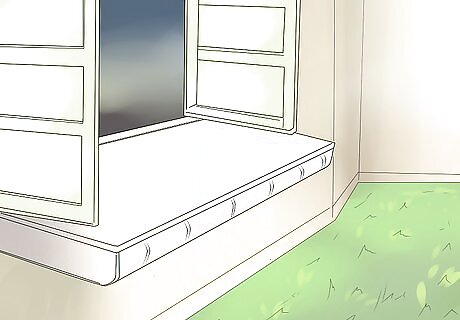
Pick out a bright spot for your Hoya. In particular, look for a spot near an north- or east-facing window so your Hoya can get plenty of natural light. Hoyas do best in bright, indirect sunlight throughout the day, though they also prefer to have two to four hours of direct sunlight. If you have a south- or west-facing window, keep your Hoya about 3–5 ft (0.91–1.52 m) away from it. If it's too close, the leaves can get sunburned.
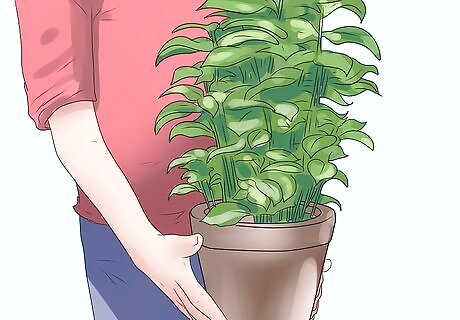
Move your older plant if it has stopped blooming as much. A two- to three-year old plant that does not bloom is probably not getting enough sunlight. If this occurs, try exposing it to another hour or two of direct sunlight.
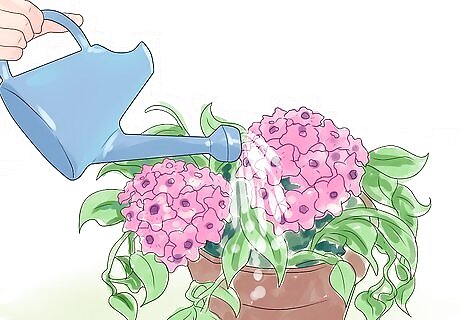
Water Hoya plants when the potting soil becomes almost completely dry. Use room-temperature water that has been “aged” or left sitting in an open container for at least 24 to 36 hours. Hoya plants are tropical plants that could be stressed by cold tap water. Letting the water sit for 24 to 36 hours also allows chlorine and fluorine dissipate naturally. Chlorine and fluorine are chemicals commonly found in tap water that can potentially harm plants.
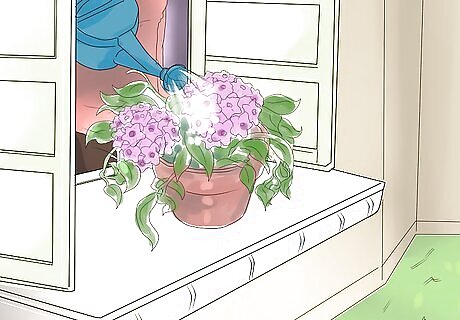
Water your plant in the morning. This allows the moisture to be available to the plant throughout the day. Doing this also ensures that the leaves will dry before temperatures cool at night. Let the soil dry out about three-quarters of the way before you water it again. Since Hoyas are succulents, they hold a lot of water in their leaves, so you don't need to keep the soil too moist.

Pour the water evenly over the soil until it drains from the bottom of the pot. Empty the catch basin beneath the pot after the water drains through. Water left in the catch basin could be absorbed back up into the potting soil, keeping the roots too wet and depriving them of oxygen. Hoya plant roots need oxygen to keep them healthy. If the roots are kept too wet they could develop root rot.
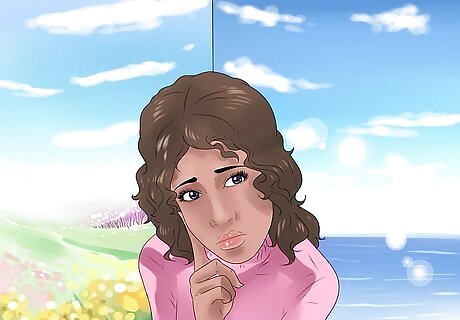
Keep the season in mind. Hoyas need to be watered more often during the spring and summer while they are actively growing and less often during the fall and winter. If a Hoya plant begins to drop its leaves, it is probably being watered too often. Let the soil dry a little more before watering it again.
Feeding Your Hoya
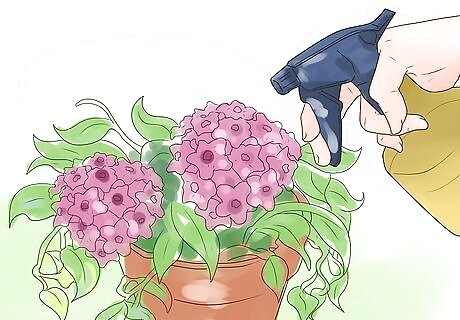
Fertilize Hoya plants with a balanced, water-soluble houseplant fertilizer. Do this every three to four weeks during the spring and summer. Fertilizer with a ratio of 5-10-5, 8-8-8 or 10-10-10 is fine. A common dilution rate is 1 teaspoon per gallon of water, but this varies. The dilution rate and application frequency may need to be adjusted based on an individual Hoya plant’s needs.

Adjust the frequency that you feed your plant based on the plant’s health. If the leaves and stems become pale, the Hoya needs to be given fertilizer every two weeks. If new leaves are smaller and darker than usual with shorter stems between the leaves, give the Hoya fertilizer every six weeks.
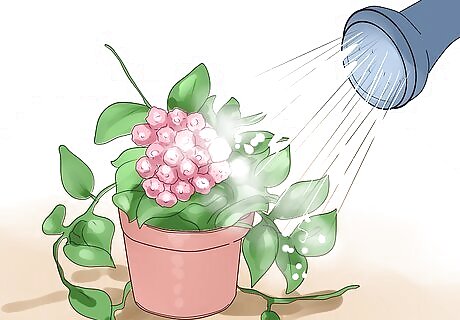
Water your plant before fertilizing it. Mix the solution up and pour it evenly over the soil immediately following a regular watering. Do not give Hoyas fertilizer solution when the potting soil is dry as it could burn their roots. They should not get any fertilizer during the fall and winter.
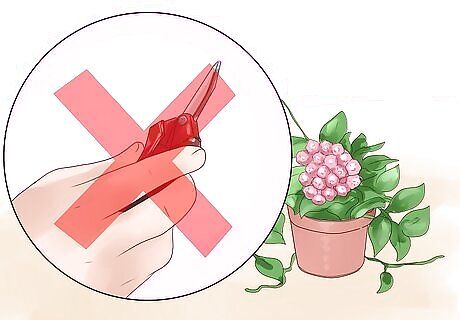
Do not remove the spent flower stems after your Hoya blooms. It will produce flowers on those stems again the next time it blooms. Also, do not move the Hoya after it begins to develop new flower buds. Moving the Hoya could disturb it and cause it to drop the buds before they open.
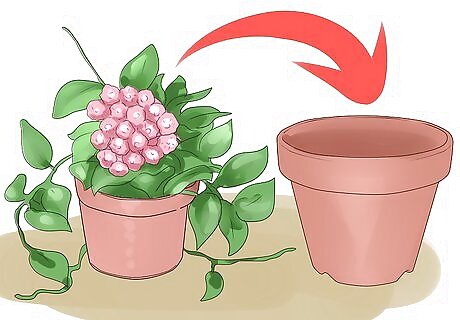
Repot Hoyas only when they are completely pot-bound. The container will be packed with roots when it is ready to be repotted. Being pot-bound encourages Hoyas to bloom. Repot the Hoya into a container with drain holes that is only one size larger than the current container.

Use a peat-based commercial potting soil that contains perlite for improved drainage. Read the ingredients on the potting soil bag. It should be primarily sphagnum peat moss. Pour an inch or two of potting soil into the new container. You can also use a combination of three-quarters succulent mix with one-quarter potting soil.
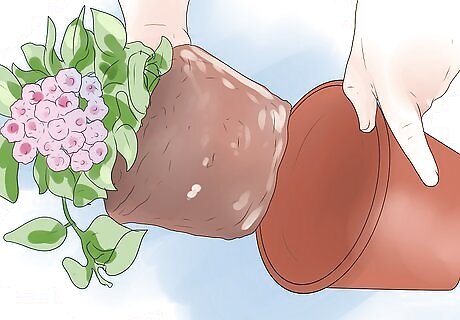
Turn the Hoya on its side and gently pull it out of the old container. If it seems to be stuck, run a butter knife around the inside of the container to loosen the roots.
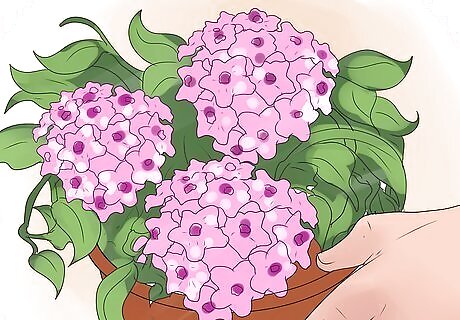
Set the Hoya in the new container. Finish filling the container with potting soil. Water the Hoya generously to help settle the soil around the roots.



















Comments
0 comment